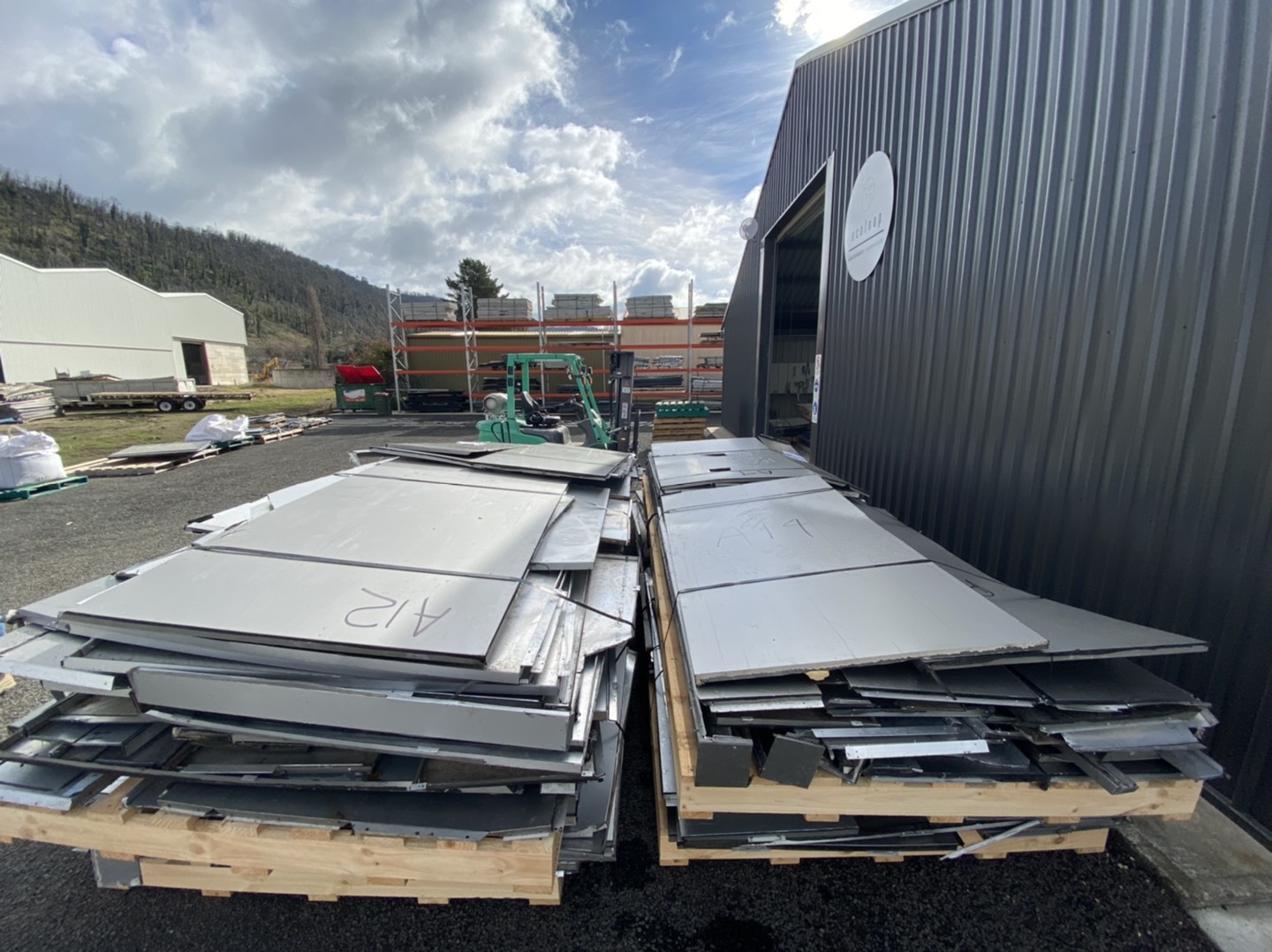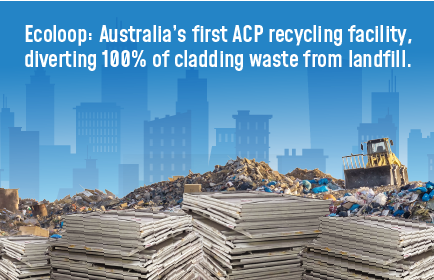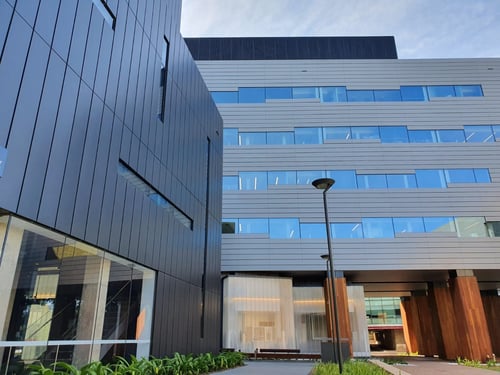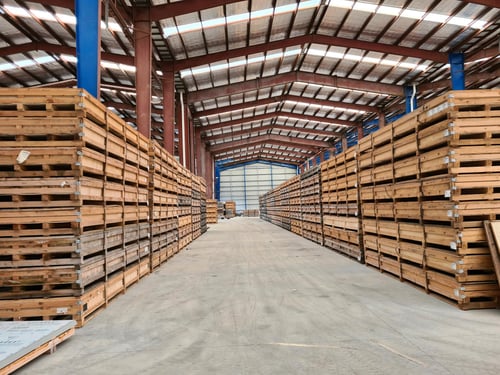After investing $1.6 million, Ecoloop has been fully operational and processing ‘non-compliant’ cladding waste from rectification projects across Australia since January, 2021.
Ecoloop was Australia’s first ACP recycling solution for recladding waste. The process sees ‘non-compliant cladding‘ waste from rectification projects recycled and repurposed, diverting up to 100% of non-compliant ACP cladding from landfill. Ecoloop remains the only recycling program in Australia which can process both PE and FR waste.
Did you know?
The construction industry contributes to almost all types of pollution and is responsible for over 30% of the extraction of natural resources, as well as 25% of solid waste generated in the world.
With more emphasis being placed on sustainability and the circular economy, especially in construction, Fairview took a proactive approach to enhancing sustainability in the industry through the introduction of Ecoloop.
Since the Lacrosse tower fire in November 2014 which highlighted the concerns of combustible cladding, Australian governments have been working to ensure building and occupant safety. This was accelerated by the Grenfell tragedy in June 2017. The focus has been on Aluminium Composite Panels (ACP). However, the cladding crisis is now becoming an environmental one. With an estimated 4 million square meters of ACP in the process of being removed from Australian buildings, the question is where does this removed panel go?
The options are landfill, export, and Australian processing, such as Ecoloop.
For panels which are inherently valuable, landfill is an unsustainable and poor option. The quantity of panel is significant and will not break down entirely over time.
Export is not an easy option, and needs to be a last resort. Some Australian scrap traders will accept ACP and ship it to developing nations, claiming to recycle it. The aluminium may be recycled, but in hazardous and impactful ways. This is neither ethical or sustainable, and the government is rightly tightening their export policies.
So, we need Australian processing. Unlike other recycling practices, Ecoloop provides an Australian solution following Australian Standards using Australian workers.
What does ACP consist of?
Aluminium Composite Panel, as it comes off the wall of a building, consists of 4 key components:
1) the aluminium panel skins,
2) the polyethylene panel core,
3) ferrous metals including screws and steel flashings, and
4) the mixed residuals including sealant, backing rod, paint, tapes, and all other components that make up a façade.
Any repurposing in Australia needs to consider these 4 components to ensure 100% diversion from landfill.
So, how is 100% diversion from landfill achieved?
Firstly, Fairview trucks pick up the panels after delivering new product, creating a backload service to minimise carbon footprint. The panels are brought back to Lithgow, where they are accurately weighed and recorded. Shortly afterwards, to minimise storage onsite the panels enter the process. This starts with a primary shred, of all components. Once down into manageable size pieces, the material enters the Ecoloop Separator. This separates the aluminium from the panel core, any ferrous metals and the mixed residuals. Once separated, the materials are bagged and distributed for repurposing.
- Aluminium is sent to an aluminium smelter to be made into new aluminium products, such as window frames, park benches and building products.
- Polyethylene is sent to a plastic manufacturer to be repurposed into new and safe plastic products, such as concrete bar chairs, flower pots, commercial landscape drains and pits, piping, plastic pallets and bottles.
- Ferrous metals go to a metal recycler for the reproduction of new metal products.
- Mixed residuals – unlike any other ACP recycling process, Ecoloop diverts any remaining non-recyclable fractions into the Waste to energy process which in turn is used to offset the use of coal.
- Uniquely, the Ecoloop solution prevents any of the elements from ending up in landfill
An important part of the process is reporting on where the materials end up and their end use. Possible uses and innovative applications for the recycled material, continue to be investigated through our engagement with leading Universities and research and technology organisations.
In addition, reporting and independent auditing will provide our clients with statistics on how Ecoloop has helped them lessen their environmental impact now and into the future.
How can you play your part?
By taking the first step to consider where your cladding waste is going, you are showing your awareness.
By contacting Fairview at ecoloop@fv.com.au, you’re showing your commitment to enhancing sustainability in the construction industry.
Head to the Ecoloop webpage to find out more.



